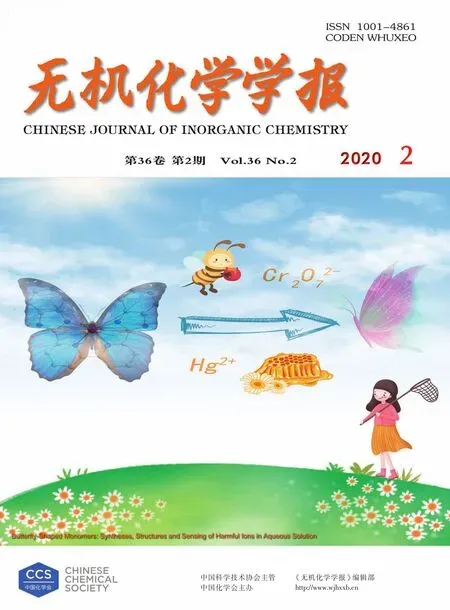由醚氧桥连四羧酸配体构筑的锰(Ⅱ)和锌(Ⅱ)配位聚合物的合成、晶体结构、荧光及磁性质
2020-03-18赵振宇邹训重冯安生顾金忠
黎 彧 赵振宇 邹训重 冯安生 顾金忠
(1广东轻工职业技术学院,广东省特种建筑材料及其绿色制备工程技术研究中心/佛山市特种功能性建筑材料及其绿色制备技术工程中心,广州 510300)
(2深圳信息职业技术学院智能制造与装备学院,深圳 518172)
(3兰州大学化学化工学院,兰州 730000)
The design and synthesis of coordination polymers have become the subjects of extensive investigation owing to the intriguing structures and functional properties,such as gas separation,catalysis,sensing,luminescence and magnetism[1-8].The applications of such functional coordination polymers largely depend on the metal ions,organic ligands,solvent systems,temperatures,and pH values[9-14].
In this context,semi-rigid polycarboxylate ligands have been extensively utilized to synthesize various functional coordination polymers owing to their strong coordination ability in diverse modes and the fact that they are able to satisfy the geometric requirement of the metal centers,which leads to higher dimensional frameworks[10,12,15-19].
In this context,we selected 3,3′,4,5′-diphenyl ether tetracarboxylic acid (H4L)as an organic linker owing to the following features:(1)it can twist and rotate freely to generate different angles between the two phenyl planes via the C-Oether-C bond to furnish a subtle conformational adaptation; (2)it has nine potential coordination sites (eight carboxylate O donors and one Oetherdonor),which can lead to diverse coordination patterns and high dimensionalities,especially when acting as a multiply bridging block;(3)this acid block remains poorly used for the generation of coordination polymers.Given these features,the main objective of the present study consisted in the exploration of H4L as a novel etherbridged tetracarboxylate block for the assembly of diverse coordination polymers.
In this work,we report the syntheses,crystal structures,luminescent and magnetic properties of two Mn(Ⅱ) and Zn(Ⅱ) coordination polymers constructed from the ether-bridged tetracarboxylate ligand.
1 Experimental
1.1 Reagents and physical measurements
All chemicals and solvents were of AR grade and used without further purification.Carbon,hydrogen and nitrogen were determined using an Elementar Vario EL elemental analyzer.IR spectra were recorded using KBr pellets and a Bruker EQUINOX 55 spectrometer.Thermogravimetric analysis (TGA)data were collected on a LINSEIS STA PT1600 thermal analyzer with a heating rate of 10℃·min-1.Excitation and emission spectra were recorded on an Edinburgh FLS920 fluorescence spectrometer using the solid samples at room temperature.Magnetic susceptibility data were collected in the 2~300 K temperature range on a Quantum Design SQUID Magnetometer MPMS XL-7 with a field of 0.1 T.A correction was made for the diamagnetic contribution prior to data analysis.
1.2 Synthesis of{[Mn2( μ6-L)(phen)2]·5H2O}n(1)
A mixture of MnCl2·4H2O (0.040 g,0.20 mmol),H4L(0.035 g,0.10 mmol),phen(0.040 g,0.20 mmol),NaOH (0.016 g,0.40 mmol)and H2O (10 mL)was stirred at room temperature for 15 min,and then sealed in a 25 mL Teflon-lined stainless steel vessel,and heated at 160℃for 3 days,followed by cooling to room temperature at a rate of 10℃·h-1.Yellow block-shaped crystals of 1 were isolated manually,and washed with distilled water.Yield:54% (based on H4L).Anal.Calcd.for C40H32Mn2N4O14(%):C 53.23,H 3.57,N 6.21;Found(%):C 53.36,H 3.58,N 6.17.IR(KBr,cm-1):3 389w,3 066w,1 610m,1 565s,1 515m,1 448w,1 427m,1 381s,1 258w,1 220w,1 142w,1 103 w,1 063w,980w,847m,778w,724m,634w,545w.
1.3 Synthesis of{[Zn2( μ7-L)(py)]·H2O}n(2)
A mixture of ZnCl2(0.027 g,0.20 mmol),H4L(0.035 g,0.10 mmol),py (0.50 mL,6.30 mmol),and H2O (10 mL)was stirred at room temperature for 15 min,and then sealed in a 25 mL Teflon-lined stainless steel vessel,and heated at 160℃for 3 days,followed by cooling to room temperature at a rate of 10℃·h-1.Colorless block-shaped crystals of 2 were isolated manually,and washed with distilled water.Yield:50%(based on H4L).Anal.Calcd.for C21H13Zn2NO10(%):C 44.24,H 2.30,N 2.46;Found(%):C 44.03,H 2.29,N 2.47.IR(KBr,cm-1):3 562w,3 495w,3 076w,1 630s,1 571s,1 448m,1 386s,1 298w,1 265m,1 220 w,1 147w,1 103w,1 069w,1 047w,985w,935w,901w,851w,834w,795w,767w,718w,662w,644w,584w,534w.
The complexes are insoluble in water and common organic solvents,such as methanol,ethanol,acetone and DMF.
1.4 Structure determinations
Two single crystals with dimensions of 0.25 mm×0.20 mm×0.19 mm (1)and 0.26 mm×0.24 mm×0.23 mm(2)were collected at 293(2)K on a Bruker SMART APEXⅡ CCD diffractometer with Mo Kα radiation(λ=0.071 073 nm).The structures were solved by direct methods and refined by full matrix least-square on F2using the SHELXTL-2014 program[20].All nonhydrogen atoms were refined anisotropically.All the hydrogen atoms were positioned geometrically and refined using a riding model.Disordered solvent molecules in 1 were removed using the SQUEEZE routine in PLATON[21].The number of solvent water molecules was obtained on the basis of elemental and thermogravimetric analyses.A summary of the crystallography data and structure refinements for 1 and 2 is given in Table 1.The selected bond lengths and angles for complexes 1 and 2 are listed in Table 2.Hydrogen bond parameters of complex 2 are given in Table 3.
CCDC:1943370,1;1943371,2.

Table 1 Crystal data for complexes 1 and 2
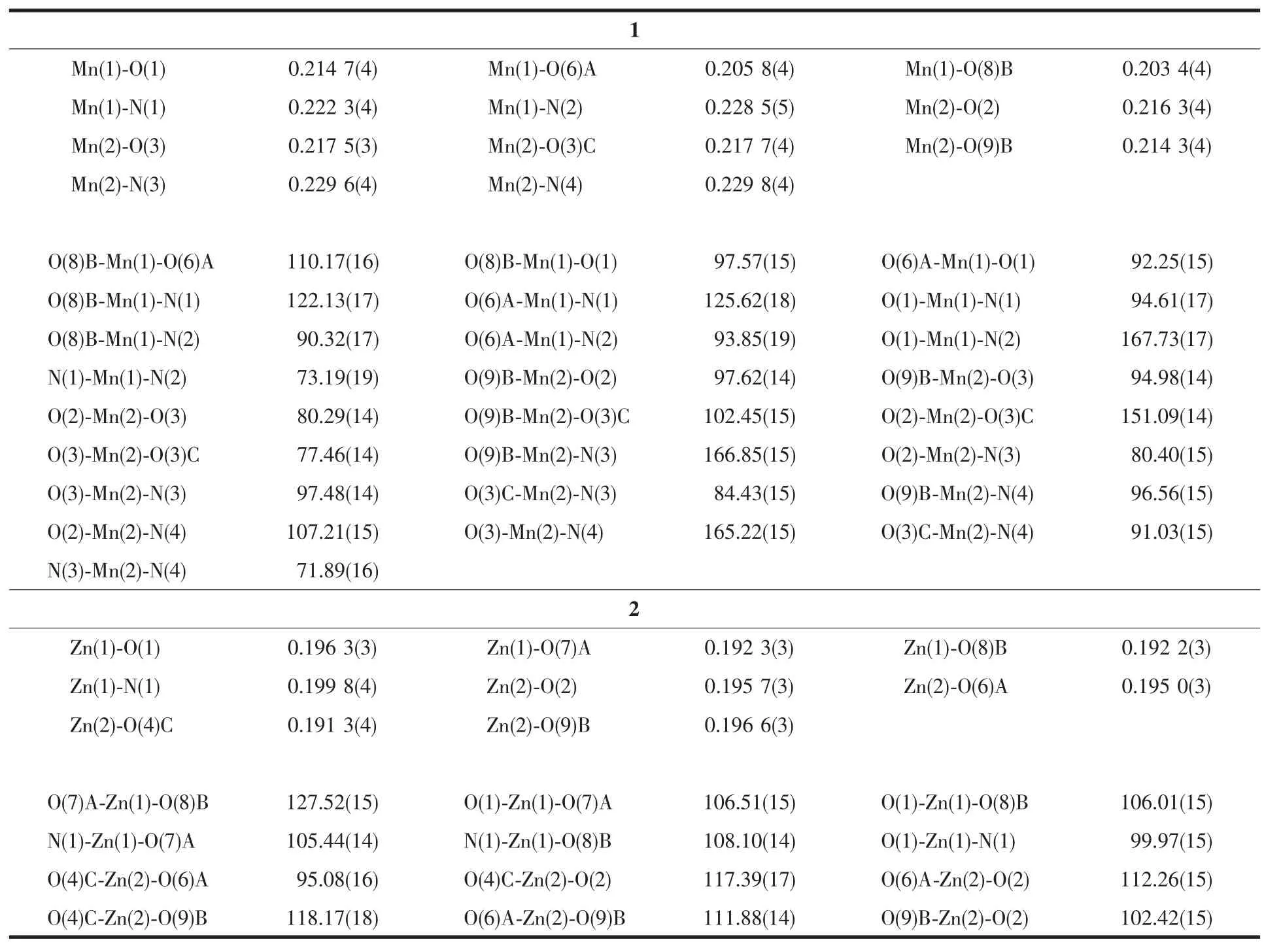
Table 2 Selected bond distances(nm)and bond angles(°)for complexes 1 and 2

Table 3 Hydrogen bond lengths(nm)and angles(°)of complex 2
2 Results and discussion
2.1 Description of the structure
2.1.1 Crystal of{[Mn2(μ6-L)(phen)2]·5H2O}n(1)
An asymmetric unit of complex 1 possesses two Mn(Ⅱ) ions(Mn1 and Mn2),one μ6-L4-block,two phen moieties and five lattice water molecules(Fig.1).Mn1 center is five-coordinated and reveals a trigonal pyramidal{MnN2O3}environment,which is completed by three carboxylate O atoms from three μ6-L4-blocks and a pair of N donors from the phen moiety.The sixcoordinated Mn2 ion displays a distorted octahedral{MnN2O4}geometry filled by four carboxylate O atoms from three μ6-L4-blocks and a pair of N donors from the phen moiety.The lengths of the Mn-O and Mn-N bonds are 0.203 4(4)~0.217 7(4)and 0.222 3(4)~0.229 8(4)nm, respectively,which are within the normal values for related Mn(Ⅱ) derivatives[10,12,16,19].The L4-ligand behaves as a μ6-block(mode Ⅰ,Scheme 1),wherein four deprotonated carboxylate groups adopt monodentate or μ-bridging bidentate modes.In the μ6-L4-block,a dihedral angle(between two benzene rings)and a C-Oether-C angle are 66.27°and 118.88°,respectively.Four carboxylate groups and two carboxylate O atoms of four different μ6-L4-blocks interlink four adjacent Mn(Ⅱ)centers to give a tetranuclear Mn4unit(Fig.2).These Mn4units are multiply held together by the remaining COO-groups to generate a 2D sheet(Fig.3).

Fig.1 Drawing of asymmetric unit of complex 1 with 30%probability thermal ellipsoids

Scheme 1 Coordination modes of L4-ligands in complexes 1 and 2
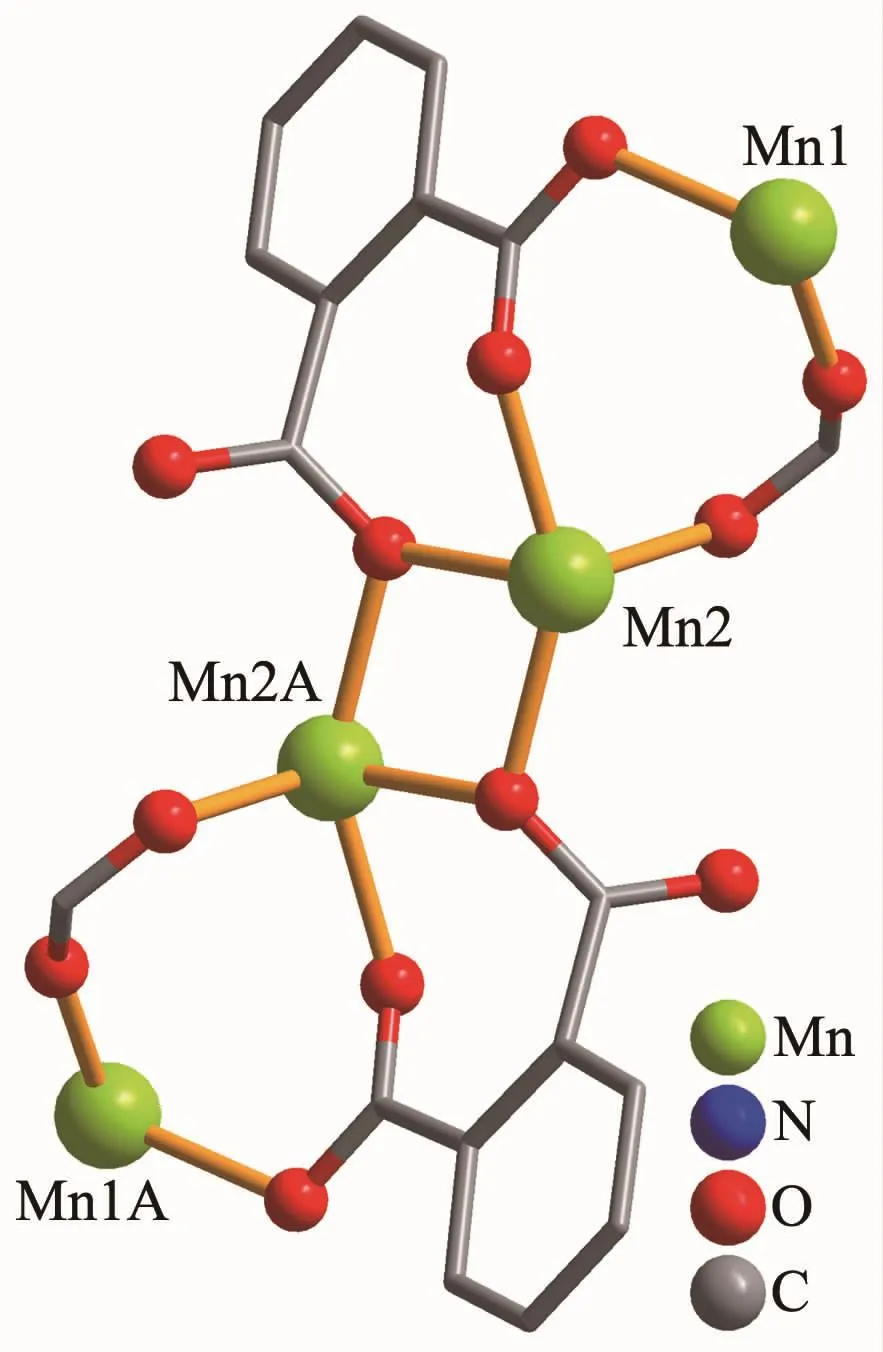
Fig.2 Tetra-manganese(Ⅱ)subunit in 1
2.1.2 Crystal of{[Zn2(μ7-L)(py)]·H2O}n(2)
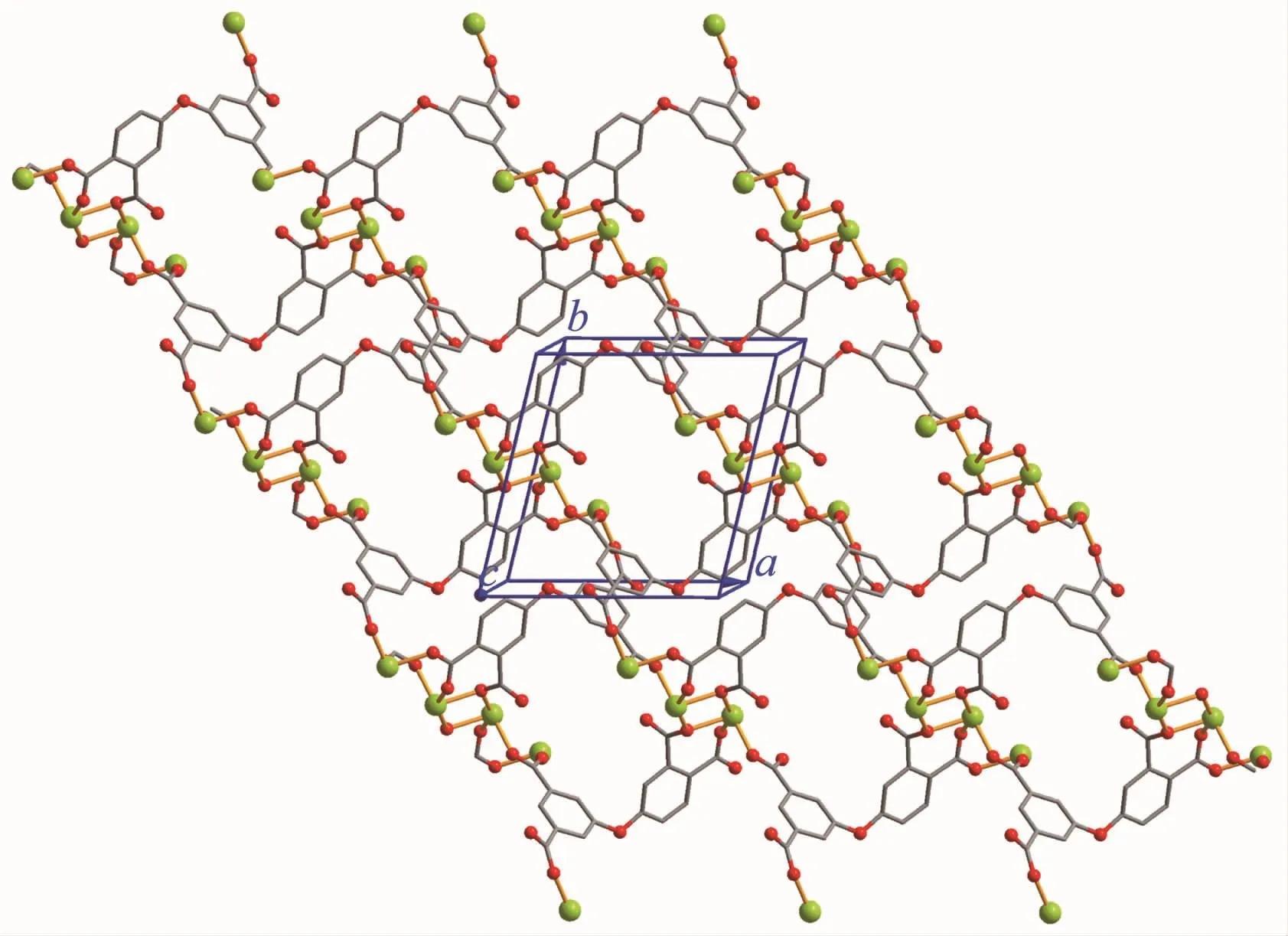
Fig.3 Two dimensional sheet in complex 1 viewed along c axis
This complex reveals a 2D metal-organic network.An asymmetric unit has two Zn(Ⅱ)ions(Zn1 and Zn2),one μ7-L4-block,one py ligand and one H2O molecule of crystallization.The Zn1 center is tetra-coordinated and reveals a distorted tetrahedral{ZnNO3}geometry.It is completed by three carboxylate O donors from three individual μ7-L4-moieties and one pyridyl N donor.The Zn2 ion is also tetra-coordinated and has a distorted tetrahedral{ZnO4}environment comprising four carboxylate O atoms of three different μ7-L4-moieties.The Zn-O(0.191 4(4)~0.196 5(3)nm)and Zn-N(0.199 8(4)nm)bonds are within standard values[12,22-23].The L4-block acts as a μ7-linker with its carboxylate groups adopting a monodentate or μ-bridging bidentate mode(modeⅡ,Scheme 1).Within the μ7-L4-block,the dihedral angle between two aromatic rings is 62.07°,whereas the C-Oether-C angle is 118.98°.Two adjacent Zn centers are held together by means of three carboxylate groups coming from three μ7-L4-spacers (Fig.4).As a result,the dizinc(Ⅱ)subunits with a Zn…Zn separation of 0.332 6(3)nm are formed and further interlinked by μ7-L4-blocks to produce a 2D network(Fig.6).
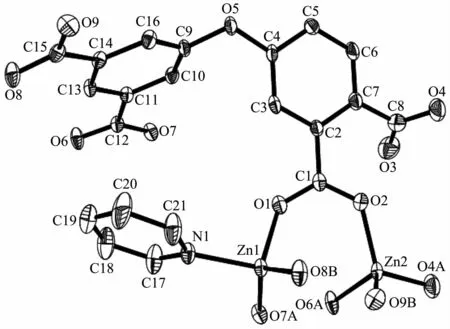
Fig.4 Drawing of asymmetric unit of complex 2 with 30%probability thermal ellipsoids
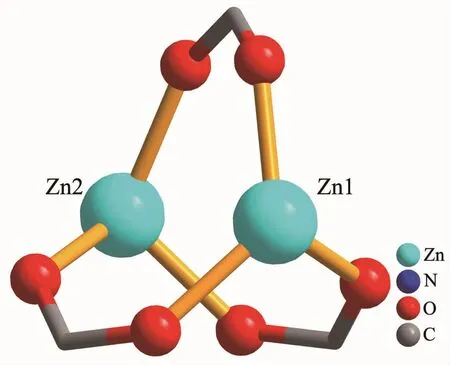
Fig.5 Di-zinc(Ⅱ)subunit in 2
2.2 TGA analysis
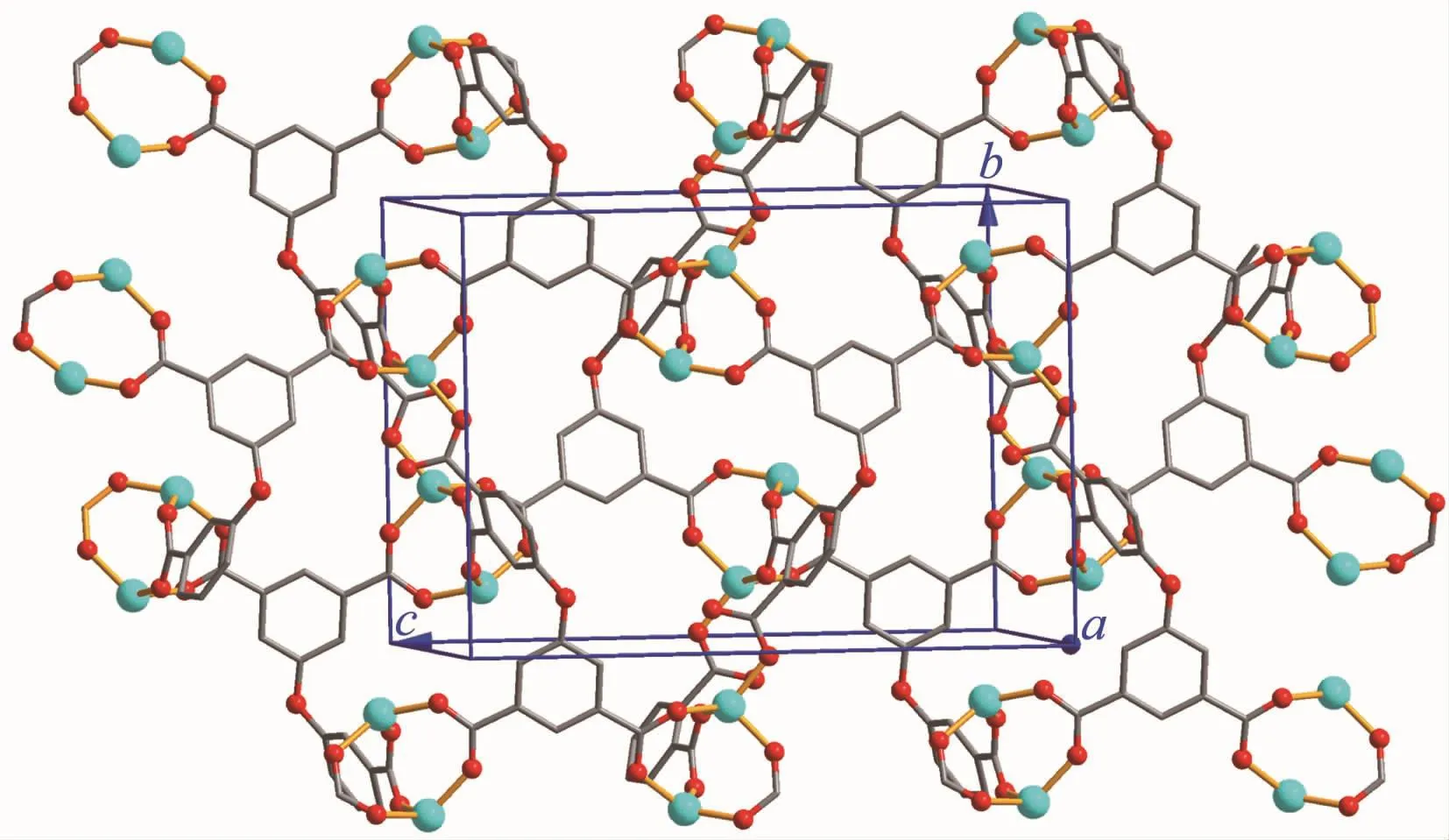
Fig.6 Two dimensional sheet of 2 viewed along a axis
To determine the thermal stability of complexes 1 and 2,their thermal behaviors were investigated under nitrogen atmosphere by thermogravimetric analysis(TGA).As shown in Fig.7,TGA curve of complex 1 shows that there was a loss of five lattice water molecules between 35 and 120℃ (Obsd.9.8%,Calcd.9.9%);further heating above 220℃leads to a decomposition of the dehydrated sample.Complex 2 lost its one lattice water molecule in a range of 44~142℃ (Obsd.3.1%,Calcd.3.2%),followed by the decomposition at 392℃.
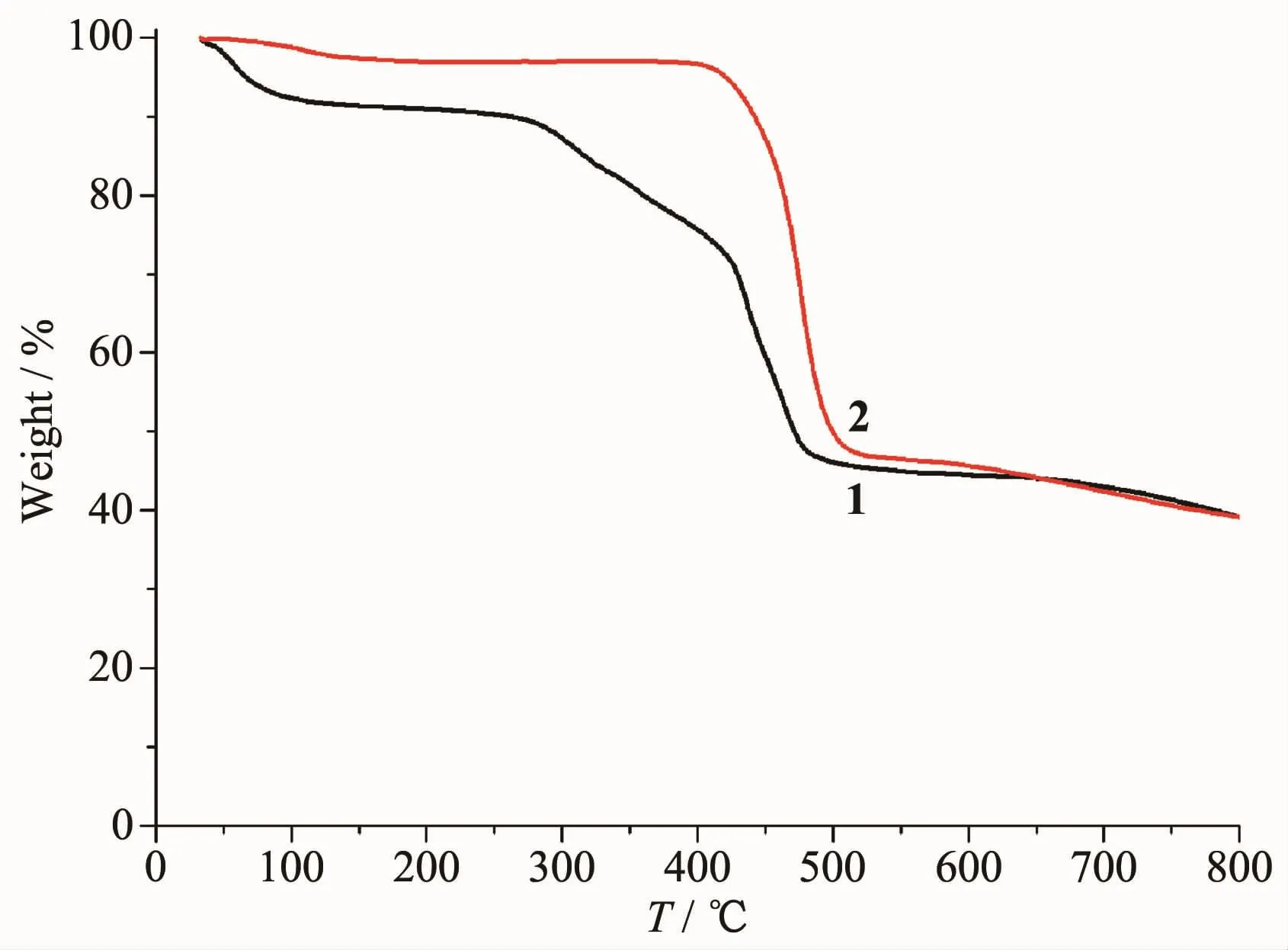
Fig.7 TGA curves of complexes 1~2
2.3 Luminescent properties
Solid-state emission spectra of H4L and zinc(Ⅱ)complex 2 were measured at room temperature(Fig.8).The spectrum of H4L revealed a weak emission with a maximum at 467 nm(λex=300 nm).In comparison with H4L,complex 2 exhibited more extensive emission with a maximum at 446 nm (λex=300 nm).These emissions correspond to intraligand π-π*or n-π*transition of H4L[10,12,18].Enhancement of the luminescence in 2 vs H4L can be explained by the coordination of ligands to Zn(Ⅱ),because the coordination can augment a rigidity of ligands and reduce an energy loss due to radiationless decay[12,18,22].
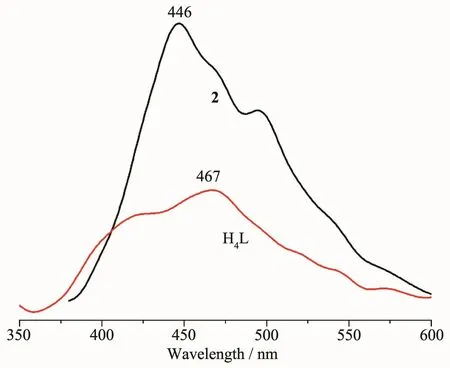
Fig.8 Solid-state emission spectra of H4L and complex 2 at room temperature
2.4 Magnetic properties
Variable-temperature magnetic susceptibility measurements were performed on powder samples of 1 in the 2~300 K temperature range(Fig.9).For the 2D Mn(Ⅱ)polymer 1 at room temperature,the value of χMT,8.80 cm3·mol-1·K,was close to the value(8.76 cm3·mol-1·K)expected for two magnetically isolated high-spin Mn(Ⅱ)ion(S=5/2,g=2.0).If temperature was lowered,the χMT value decreased continuously to a minimum of 1.51 cm3·mol-1·K at 2.0 K.Between 10 and 300 K,the magnetic susceptibility can be fitted to the Curie-Weiss law with C=9.50 cm3·mol-1·K and θ=-23.22 K.Because of the long separation between the neighboring Mn4units, only the coupling interactions within the tetra-manganese(Ⅱ)blocks were considered.A decrease in χMT and a negative θ are due to an overall antiferromagnetic coupling between the manganese centers in the Mn4subunits.According to the structure of complex 1 (Fig.2),three are two sets of magnetic exchange pathway within the Mn4subunit via two carboxylate O atoms and four carboxylate groups bridges,which could be responsible for the observed antiferromagnetic exchange.
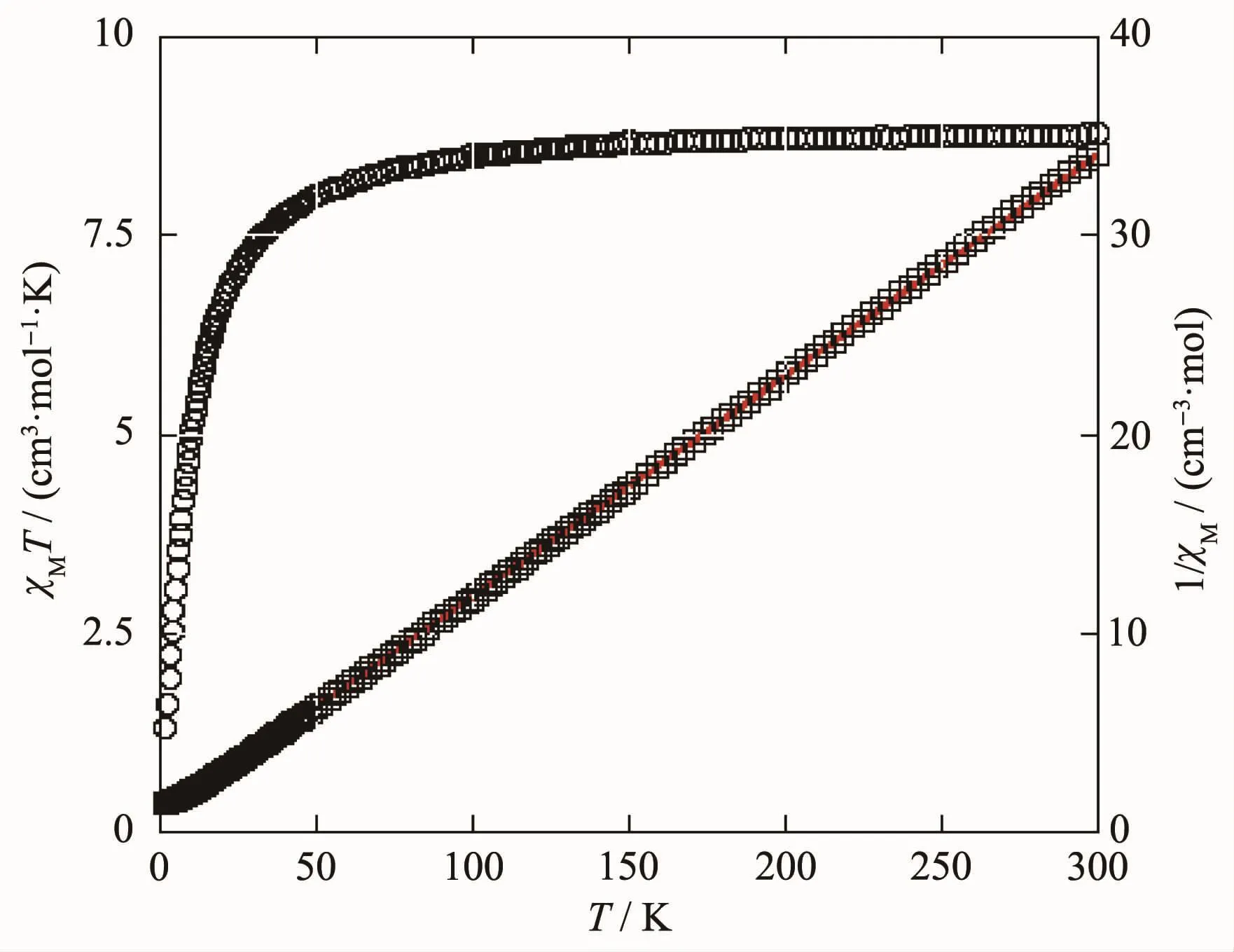
Fig.9 Temperature dependence of χMT(○)and 1/χM(□)for complex 1
3 Conclusions
In summary,we have successfully synthesized and characterized two new manganese and zinc coordination polymers by using one unexplored etherbridged tetracarboxylic acid as ligand under hydrothermal condition.Both complexes feature a 2D sheet structure based on Mn4or Zn2subunits.Besides,the luminescent(for 2)and magnetic(for 1)properties were also investigated and discussed.The results show that such ether-bridged tetracarboxylic acid can be used as a versatile multifunctional building block toward the generation of new coordination polymers.
